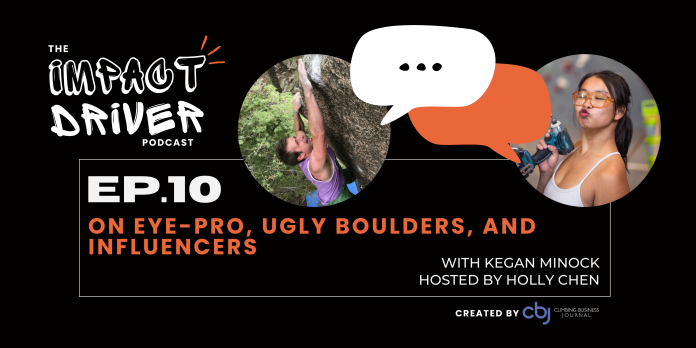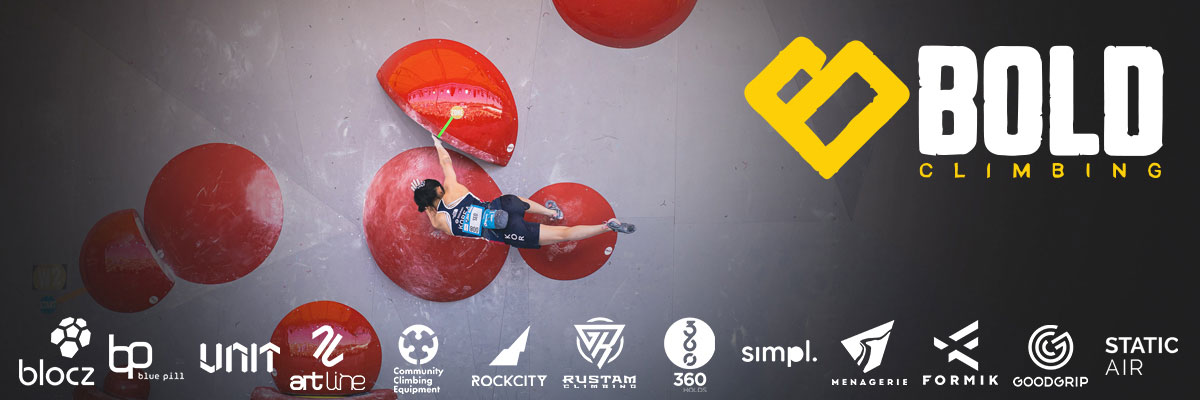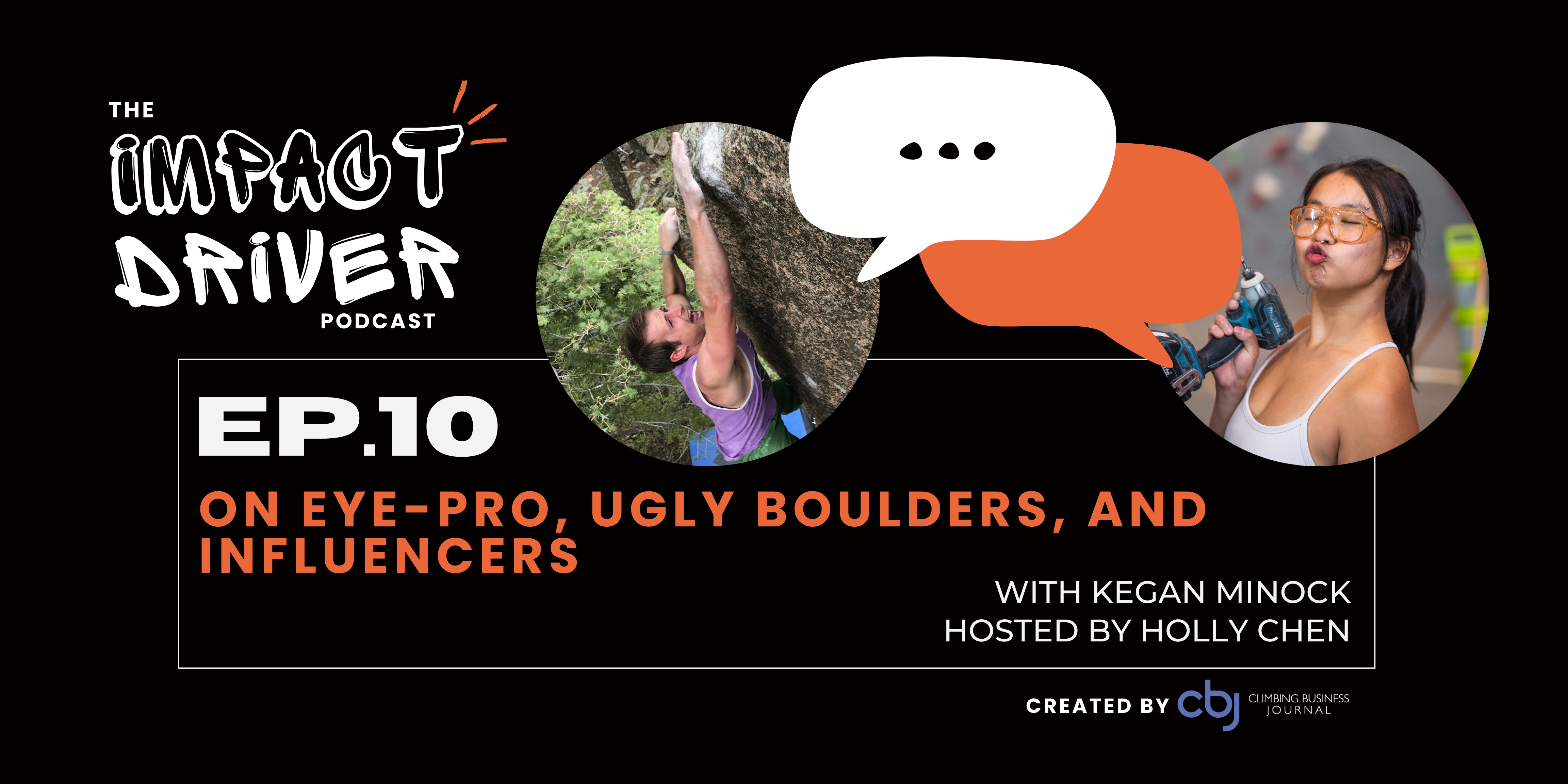
Kegan Minock is the Gym Director and Head Routesetter at Gripstone Climbing in Colorado Springs, Colorado. Having gotten his start in the industry through the youth competition scene, Kegan began setting at Lifetime Fitness at the age of 17 before transitioning into setting at commercial facilities and becoming a USAC Level 4 routesetter. His industry career thus far has spanned leading routesetting at the iconic 90s gym ROCK’n & JAM’n to shaping holds of his own for setters. Our conversation today covers industry growing pains, what it means to be a professional routesetter, the evolution of the trade, the ethics of unpaid work, and the effects of social media on routesetting.
Thank you Approach and Bold Climbing for your support!
And thank you Devin Dabney for your music!
Timestamps
00:00 – Intro
04:37 – Definition of a professional routesetter
12:54 – Definition of a recreational routesetter
17:19 – From volunteering to a career
19:29 – Thoughts on volunteer positions
22:33 – Travel expenses of guest setting
24:35 – Current state of routesetting professionalization
33:27 – A word from our sponsors
34:10 – Effect of social media on setting
41:10 – Influencer behavior
46:18 – Routesetting misconceptions
54:20 – Sustainability of routesetting
56:18 – Grading
01:00:31 – Climbing strengths
01:05:04 – Closing
Abridged Transcript
…Can you define for me what you think is a professional routesetter nowadays?
I think that’s the hardest question. I’ve been struggling to answer that question for a while. The dictionary defines a professional as “someone who is engaged in a specified activity as one’s main paid occupation.” And to that point, I don’t think that many routesetters would be considered professional. I mean, me specifically, I’m the head routesetter of a commercial climbing gym, but that’s only half my time, that’s not my main [income] source. I also am the gym director. We have another setter who’s been at my gym, who’s been setting for over 30 years. He’s an insanely decorated, talented routesetter, but he’s only doing it 20 hours a week. So, at that capacity, we’re not professional routesetters. So, it’s a hard question to answer. What is professional?
I don’t think that you have to work in a commercial climbing gym to be a professional setter. There’s plenty of freelance routesetters out there that have put in their time, that have set national events that I would consider to be a professional routesetter. But then that also goes back into the paradox of what I think a professional routesetter is…I unfortunately don’t have a good answer for what a professional routesetter is. You’ll know one when you see one, you’ll know one when you meet one, I think that’s as best [a description] as I can give you.
…With the setting industry being relatively young and still going through some growing pains, do you think a recreational routesetter exists out there? Like, if you set on a homewall, for example?
Yeah, that’s actually where my mind immediately went to. Absolutely, I do think that—and this is, again, not to be derogatory to anybody—homewall routesetters are recreational routesetters. I don’t think I would consider anybody who only sets on homewalls to be a professional routesetter.
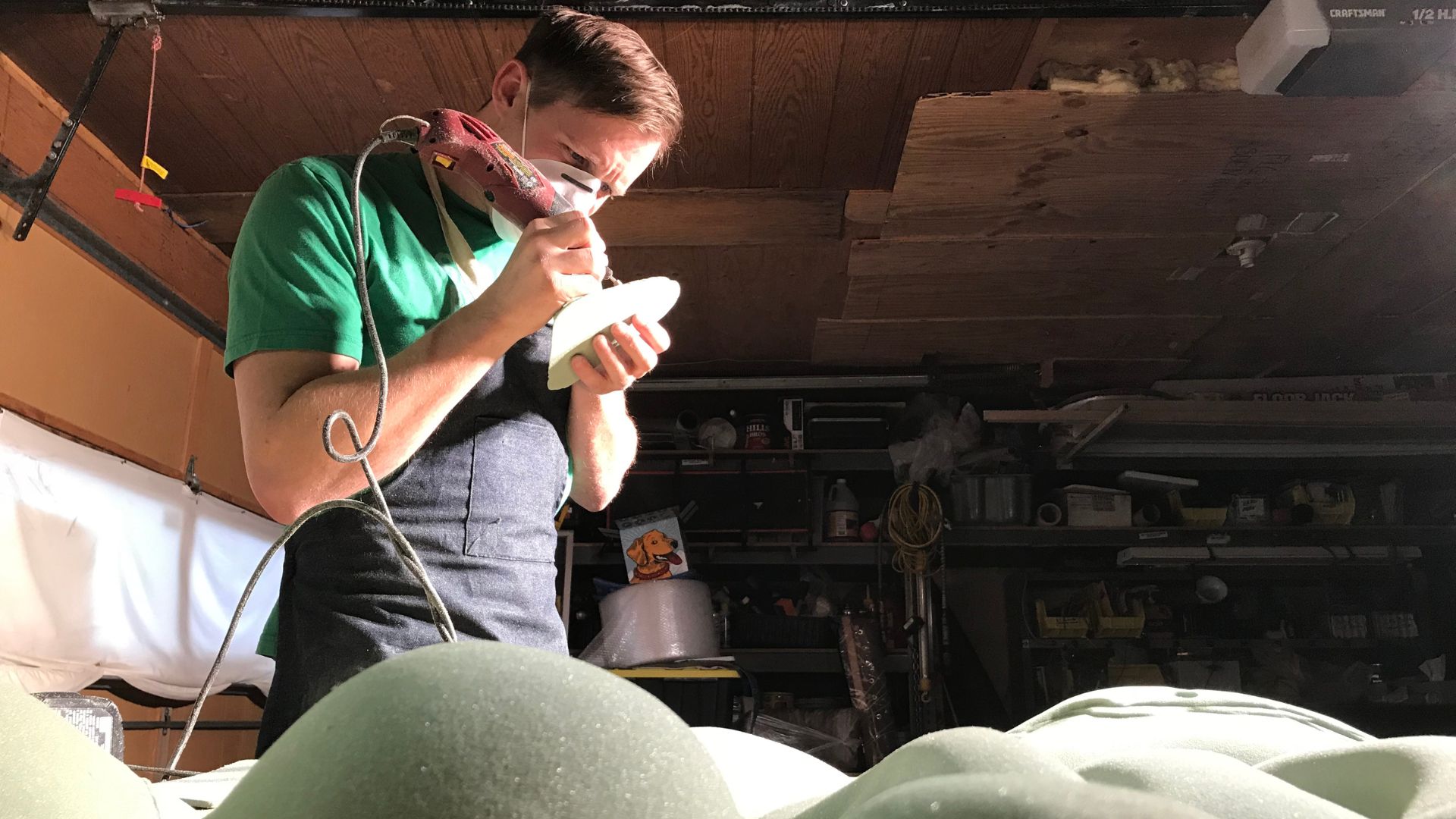
…What are some of the leaps that the industry has made to go from “most setters are volunteers and unpaid” to now “people can consider this as a profession that they can pursue for hopefully a long time”?
The biggest thing has just been the acceptance that it is skilled labor. So, I think just the whole idea that the industry has recognized that this is an important aspect of indoor climbing. I would argue, biasedly, it’s the most important aspect of indoor climbing. Without routesetters, you don’t have a product in your gym. So, I think that it is something that has been getting a lot better, where people are accepting it as a career path, not just something fun to do, or something that I can just get a free membership at a gym for…
…I know unpaid routesetters are potentially still out there, but my question for you is, should they stay? Should unpaid volunteer positions stay?
Ooh, that’s a tough question…Maybe this is a controversial opinion, I don’t know. I don’t think that it is the responsibility of the industry as a whole to tell small gyms how to operate. If volunteer setter positions make sense for them, that’s what they can make work, and the person who’s going to be doing the setting doesn’t feel taken advantage of, go for it. But I would also argue that if you are one of those gyms where it’s like, “Yeah, we trade for a membership,” I would argue to at least consider what that does to the industry. It might help your gym out, if you’re a small gym that doesn’t really have a budget to have a routesetting program. I get it, you know, co-ops, things like that. But also consider that that could be a detrimental thing to the industry, if it kind of devalues what we do a little bit. I know there’s people that get pretty upset about that, actually…
I would argue that if you’re the gym that is trying to get a guest setter to come in and do volunteer work, essentially—if you’re not getting paid, it’s volunteer work—just don’t do that. Like, you’re going to get what you pay for, and if you’re not paying for anything, you’re not going to get anything. If you want quality routes, if you’re reaching out to me—the proverbial me, not Kegan, me—if you’re reaching out to me because you want me to routeset in your facility, that means that you know that I can give you a product you want in your facility….If you’re good at something, never do it for free. You know, that’s one of my big things. Routesetters, stop volunteering your time.
…I agree with that, I definitely do. Because I think it allows a lot of people, especially routesetters in the marginalized communities—maybe you’re the only girl in that region who routesets, or if you’re from the queer community, black and brown community—I feel like those people often get taken advantage of the most in those situations. And I hate to see it, and I just want it to stop. Like, pay people for their talents, pay people for their time. You’re asking them to go for a reason, exactly what you said. You’re asking them because they can provide you with something you don’t have. Why are you not paying them?
Exactly.
Where do you think the routesetting industry currently stands in terms of professionalization right now?…
A lot better than we were ten years ago, but we still have a long ways to go. There’s a lot of things setters do that they need to stop doing. There’s also some things that I think that gyms kind of perpetuate with that as well, that gyms need to stop doing, that’s going to help the professionalization of it. Here’s a deep rabbit hole for this: Stop posting videos of you climbing in tennis shoes…Similarly, stop posting videos and photos of you setting without the proper safety gear…Stop posting videos of you doing dangerous things…
How do you think the presence of social media is affecting the industry now?
Here’s my controversial opinion: I think it’s affecting it in a very negative way. There are some positives to it. It’s a great tool for inspiration. If you’re setting your ninth boulder of the day and you’re just like, “Dude, I got nothing, all my ideas are on the wall already,” it’s a very cool tool to be able to look through, like, “Alright, let me check all the boulders that I saved on social media, draw some inspiration from that…” Maybe this is just me being old and grumpy of like, “Oh, that’s not climbing,” but it’s not representative of—if you’re a commercial routesetter—what the majority of your clientele are doing. I think it’s really easy to set a boulder using these big, beautiful macros. Absolutely no hate on climbing holds. I love climbing holds way too much, especially all this new stuff. I mean, I love climbing holds. They’re fun. They’re great. But it’s very easy to set an Instagram-worthy boulder when you have $5000 to $10,000 of fiberglass that you can just put in a compression line and now you’re just doing left, right, left, right, left, right—not really climbing moves on the wall, but it’s going to look nice on social media. People are going to like it, I’m going to get recognition on social media for this boulder that honestly doesn’t climb very good. It looks good, but it doesn’t climb very good…
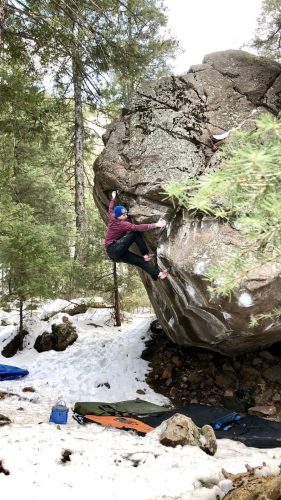
What do you think is one of the major misconceptions about the routesetting industry as believed by the climbing community or the non-routesetting community as a whole?
The big one for me is that it blows people’s minds when I tell them that I was not able to climb one of my climbs. They’re like, “What? You set it. You weren’t able to climb it?” I’m like, “No, dude, it’s really hard. It’s really hard.” [laughs] I’m not this person that’s going to flash everything in a gym. It’s hard. And I think that misconception is kind of a remnant of the old routesetting days where generally it was the strongest people in the gym that were setting the routes. So, you have people where it’s like, “Oh, well, if the setter can’t climb it, nobody else is going to climb it. They’re the strongest people here.” But I think that’s changed in a positive way; I think that the emphasis on setters has been more placed on understanding movement rather than being able to pull hard…
Just because you don’t think you’re strong enough does not mean that you’re not good enough to be a routesetter. This is a whole other rant to get into, but there’s a difference between being a strong climber and being a good climber. And I think good climbers make the best setters. If you can understand movement, if you can understand, “My body needs to be here, not here. I need to drop my knee a little bit farther because it shifts my center of gravity over just enough to be able to weight this hold, to do this move”—if you can understand that, rather than, “I don’t know, I just squeeze harder and then I grab the hold,” you are so much more valuable as a routesetter. So no, routesetters do not need to be able to climb their own climbs…

Holly grew up in Taiwan and Hong Kong. Now she lives in Denver where she reports, writes and routesets. Beyond the Climbing Business Journal, her writing has been published by Alpinist Magazine, Climbing Magazine, Gym Climber and Sharp End Publishing. Holly’s motto has always been: “keep it interesting.”
Read our interview with Holly: Storytelling Through Movement




